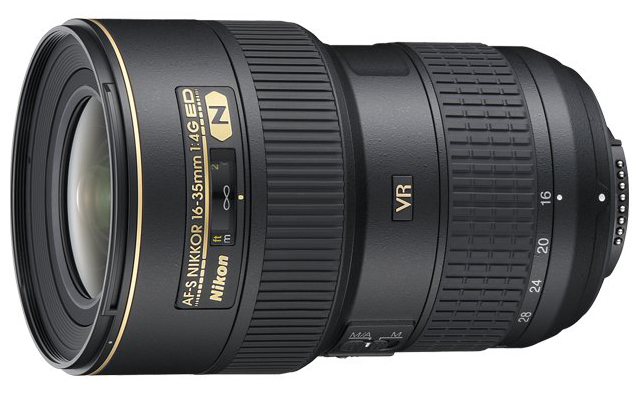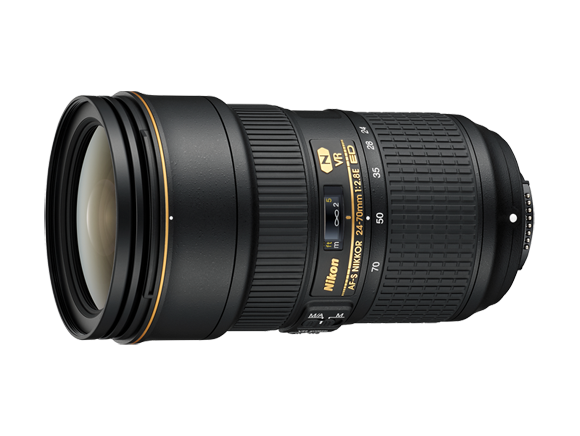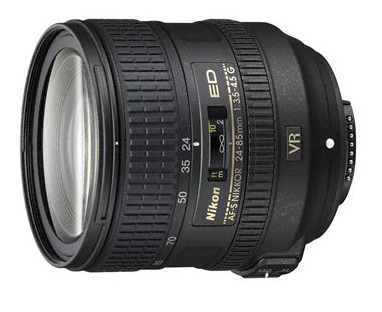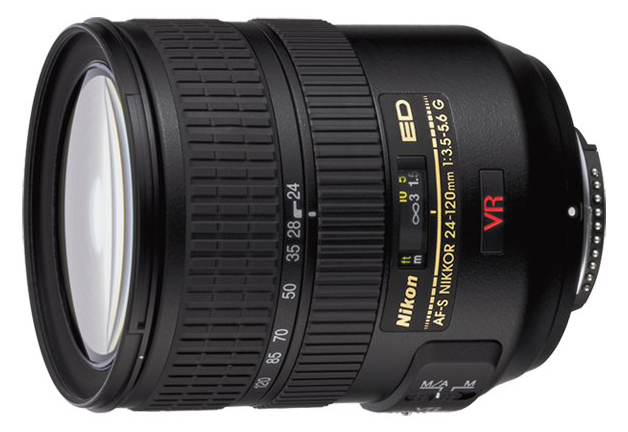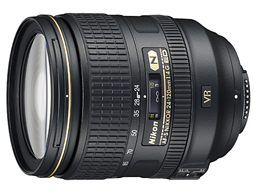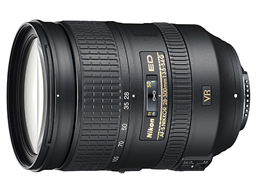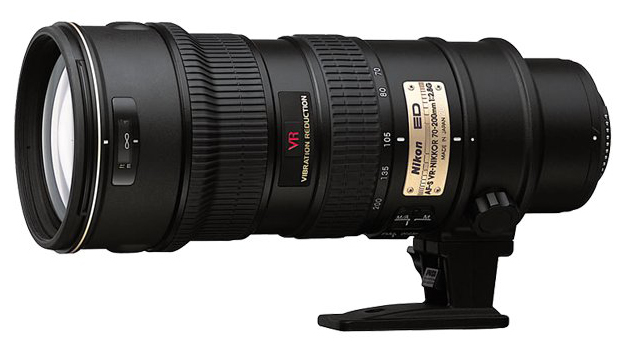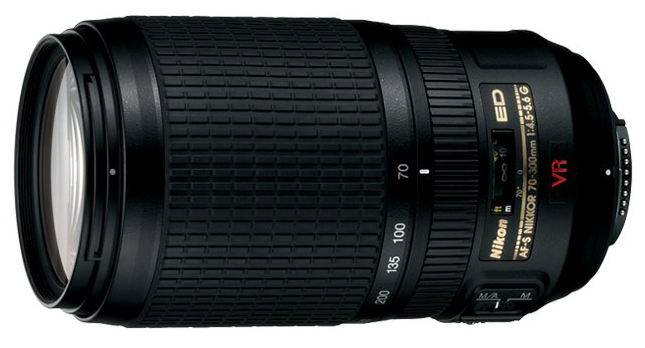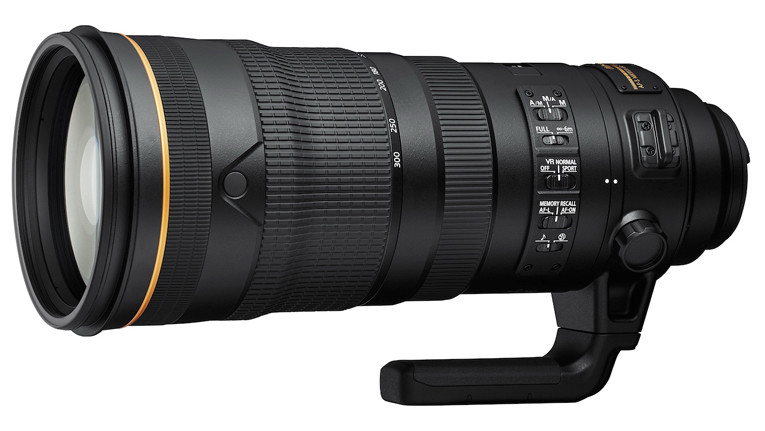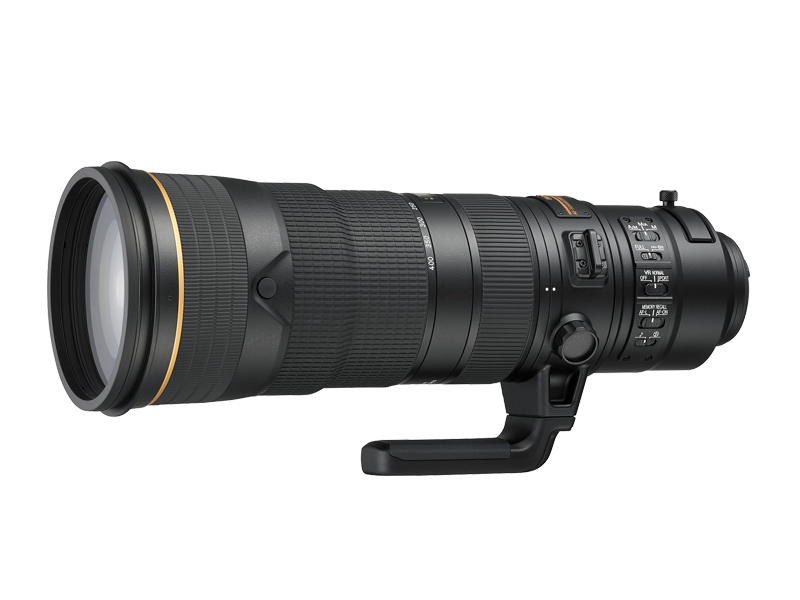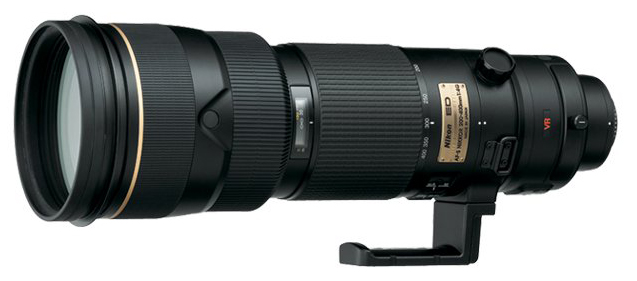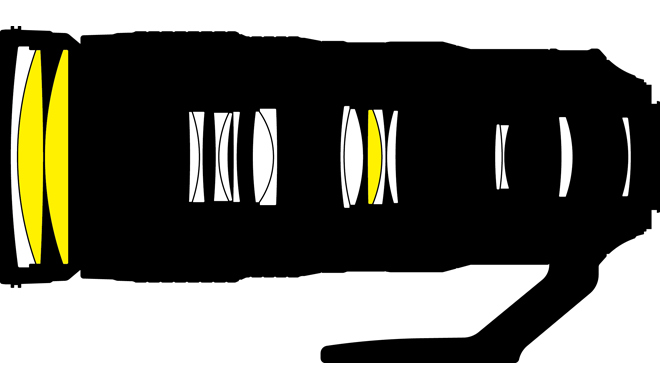AF-S Zoom-Nikkor 4/16-35 mm. G ED VR
In February 2010 Nikon introduced the 'world's first ultra wide-angle 16-35 mm FX-format compatible zoom lens with built-in vibration reduction', as Nikon stated it in its press release. Because the maximum aperture of this lens isn't that large the VR-feature is very welcome. The lens has 17 elements (of which two have ED-glass and two are aspheric) in 12 groups. Nano-crystal coating has been used as well. It has a Silent Wave Motor for quiet and fast auto focusing. The filter thread is 77mm. and the lens weighs in at 680 gram.
AF-S Zoom-Nikkor 2.8/24-70 mm.E ED VR
Exactly 8 years (August 2007) after the introduction of this beautiful AF-S Zoom-Nikkor, Nikon gave the lens in August 2015 a sophisticated Vibration Reduction feature, enabling to shoot at 4.5 aperture stops or Exposure Value (EV) settings. The optical formula of this lens consists of 20 elements in 16 groups. Two elements are made of ED-glass, 3 elements have an aspherical surface, 1 element (and that is new in the Nikkor lens line-up) is made of ED-glass and has an aspherical surface. Finally one element is made of glass with High Refractive Index (HRI). Some elements are coated with Nano Crystal and some with Fluorine. The lens, to be used on FX-format and DX-format cameras, has 9 aperture blades, can be focused down to 38 cm. and takes 82 mm. filters. Because of all the extras the lens' weight increased from 900 gram to 1.070 gram.
AF-S Zoom-Nikkor 3.5-5.6/24-85 mm. G ED VR
To be used on FX (= full frame) cameras this nice zoom lens was introduced mid June 2012. It has a Silent Wave Motor for quick focusing down to 38 cm. The optical construction consists of 16 elements in 11 groups. From the front element no. 10 is made of ED-glass and the element numbers 4, 7 and 14 have an aspherical shape. The lens - made for full frame format - has a Silent Wave Motor, the latest VR II system and 7 aperture blades. It takes 72 mm. filters and is weighing in at 485 gr. The best hood is HB-63.
AF-S Zoom-Nikkor 3.5-5.6/24-120 mm. G VR
Early 2003 this lens was introduced. It features 15 lenses - of which 2 are of ED-glass and 2 are aspheric - in 13 groups, an aperture of 7 blades, a filter ring of 72mm., all lenses are coated with Super Nikon Integrated Coating. Among all VR-lenses this lens has a surprisingly short minimum distance of 0.5 meter. The original hood is HB-25. This very nice lens is weighing in at 575 gram. In the extreme focal lengths this lens has some inevitable cushion distortion, but it remains sharp.
AF-S Zoom-Nikkor 4/24-120 G-ED VR
In August 2010 Nikon introduced this lens with an optical design of 17 elements in 13 groups. Two elements are made of ED-glass, while 3 elements are aspheric and some elements are featuring the Nano Crystal coating. The lens focuses down to 45 cm., uses 77 mm. filters, weighs in at 710 gram and may be used with the HB-53 hood.
AF-S Zoom-Nikkor 3.5-5.6/28-300 mm. G-ED VR
Nikon had to face the competition of those fellow lens makers that already offered a zoom lens with such a large zoom range. In August 2010 Nikon entered into that battle with this lens, featuring 19 (!) elements in 14 groups (2 ED elements & 3 aspheric elements). This lens focuses down to 50 cm. uses 77 mm. filters and weighs in at 800 gram. The best hood is HB-50. The huge zoom range may be useful for general photography but also Nikon engineers have to tackle various optical problems in designing such a lens.
AF-S Zoom-Nikkor 2.8/70-200 mm. G VR
This beautiful lens was introduced in February 2002. It consists of 21 elements - of which 5 are made of ED-glass - in 15 groups. All elements received the Super Nikon Integrated Coating. Aperture with 9 blades for nice images runs from 2.8-22., Minimum distance is 1.4 meter in MF and 1.5 meter in AF. The lens takes 77mm. filters and the hood HB-29. It weight is 1430 gram. By the end of July 2009 an improved version was introduced. The optical formula has been slightly changed into 21 elements in 16 groups. 7 elements are made of ED-glass and some elements have received the famous nano-crystal coating in order to avoid internal reflections. Mid October 2016 the successor (2.8/70-200 mm E FL ED VR) of this lens was introduced with a re-designed optical formula: 22 elements in 18 groups, of which 1 is made of fluorite glass, one of HRI glass and 6 (!) of ED glass. The front element has a fluorine coating for protection and some elements have nano crystal coating for eliminating internal reflections. The lens can be focused down to 1.1 meter, the aperture has 9 blades and the lens takes 77 mm. filters. The new lens is 110 gr. lighter than his older brother.
AF-S Zoom Nikkor 4/70-200 mm. ED VR At the end of October 2012 this zoom lens for FX and DX format was introduced. Its optical formula consists of 20 elements (of which 3 are of ED-glass and 1 of HRI-glass) in 14 groups with 9 diaphragm blades. One element has also the famous Nano Crystal coating. The Silent Wave Motor (SWM) makes fast focusing down to 1 meter possible. The lens uses 67 mm filters and is weighing in at 850 gram. Used with a 2x teleconverter on a Nikon D4, D800(E) and D600 this lens can offer full auto focus, as these cameras have an auto focus sensor that works with apertures of f/8 and larger.
AF-S Zoom-Nikkor 4.5-5.6/70-300 mm. G VR
Above pictures were shot with Nikon D-200 + Nikkor 70-300mm-VR-lens at 1/30 sec. f/5.6 at 300 mm. (left with, right without VR). This popular lens - among amateur photographers - was introduced as an auto focus lens back in August 1998. Its version in G-mount (and unfortunately a plastic lens mount) was put on the market in August 2000. The VR-version, with 2 elements made of ED-glass (total optical construction is 17 elements in 12 groups!) and a built-in Silent Wave Motor is a better performer. It focuses down to 150 cm. and comes with hood HB-36. More than one million lenses (of all versions) were sold already! Mid August 2016 an updated DX-version was introduced: the AF-P 70-300mm featuring a stepping motor for quicker auto focus One of the 14 elements in 10 groups is made of ED-glass. It will focus down to 1.1 meter and takes 58 mm. filters. Best hood is HB-77. Mid July 2017 Nikon introduced an AF-P 70-300mm lens for FX-format! 18 elements (of which some made of ED-glass) in 14 groups and an electromagnetic diaphragm mechanism are the main features of the new lens. Its weight is 680 gr. and the best hood is the HB-82.
AF Zoom-Nikkor 4.5-5.6/80-400 mm. VR This lens - introduced in 2000 - was Nikon´s first exchangeable SLR Zoom-Nikkor featuring a built-in vibration reduction system. It is a construction of 17 elements in 11 groups with an aperture range from 4.5 - 32. The non-turning front lens accepts 77 mm. filters and the HB-24 hood. The lens has a length of 18 cm. but at full zoom (400 mm.) it is 24 cm. long! Unfortunately the performance at the long end (400 mm.) of the zoom range is disappointing. Early March 2013 this first VR-lens in Nikon's stables was succeeded by the AF-S Nikkor 4.5-5.6/80-400mm VR; in name identical but inside a different world. The optical construction consists now of 20 elements in 12 groups. 4 elements are made of ED-glass and 1 even of Super ED-glass. Some elements received Nano Crystal Coating, closest focusing distance is 1.75 meter, but filter size remains 77 mm. and the weight went up from 1438 gram to 1570 gram (including tripod mounting collar).
AF-S Nikkor 2.8/120-300 mm FL ED SR VR
Early September 2019 Nikon announced the development of this nice zoom lens. Early January 2020 the lens was introduced. It has 25 (!) elements in 19 groups; some of the elements are nano crystal or ARNEO coated, while the frontlens has a fluorite coating. The lens can be focussed down to 2 meter, has a 112 mm filter thread, 9 aperture blades and weighs 3,250 gram.
AF-S Nikkor 4/180-400 mm E TC 1.4 FL ED VR
This unique lens - introduced mid January 2018 - offers a lot of new features; as there are 27 elements (!) - of which 8 are made of ED-glass and 1 of Fluorite glass - in 19 groups + 1 protective glass element. Some elements received a nano crystal coating. The 3500 gram heavy lens has internal focusing and - never seen before - a built-in 1.4 x teleconverter (8 elements in 5 groups)! When switching the teleconverter into the optical system you will have a 252-560 mm zoom lens at f/5.6 ! One can focus the lens down to 2 meter at all focal lengths. It takes 40.5 mm filters and the HK-41 hood. * It is said that Super ED has more ´elasticity´ to avoid distortion at high temperatures. Many lenses will become warm or even hot when they are used in bright sunlight. Not only metal parts but also optical glass may expand which may result in a focus distortion. The removable front lens is a protective lens.
AF-S Zoom-Nikkor 4/200-400 mm. G VR
In Summer 2003 this huge lens was introduced. It has 24 elements in 17 groups, 4 elements are of ED-glass. Its minimum focusing distance is 2 meter, it takes 52mm. filters and weighs in at 3275 gram. An upgraded version of this lens was introduced in April 2010. Optical formula remained the same, although some elements are now 'covered' with Nikon's famous nano-crystal coating, in order to reduce flair and ghost light beams. The Vibration Reduction system has been improved as well; in Nikon's terminology VR II. The lens features auto focus with manual override and it has a detachable protective glass at its front. The new lens weighs in at 3360 gr.
AF-S Nikkor 5.6/200-500 mm. E ED VR
Early August 2015 Nikon introduced this heavy (2.300 gram with tripod collar) AF-S Nikkor, offering Vibration Reduction, enabling to shoot hand-held. The optical formula consists of 19 elements (of which 3 are made of ED-glass) and it has 9 aperture blades, inside an electro-magnetic diaphragm unit. The lens, usable on FX- and DX-cameras can be focused down to 2.2 meter and takes 95 mm. filters.
|
